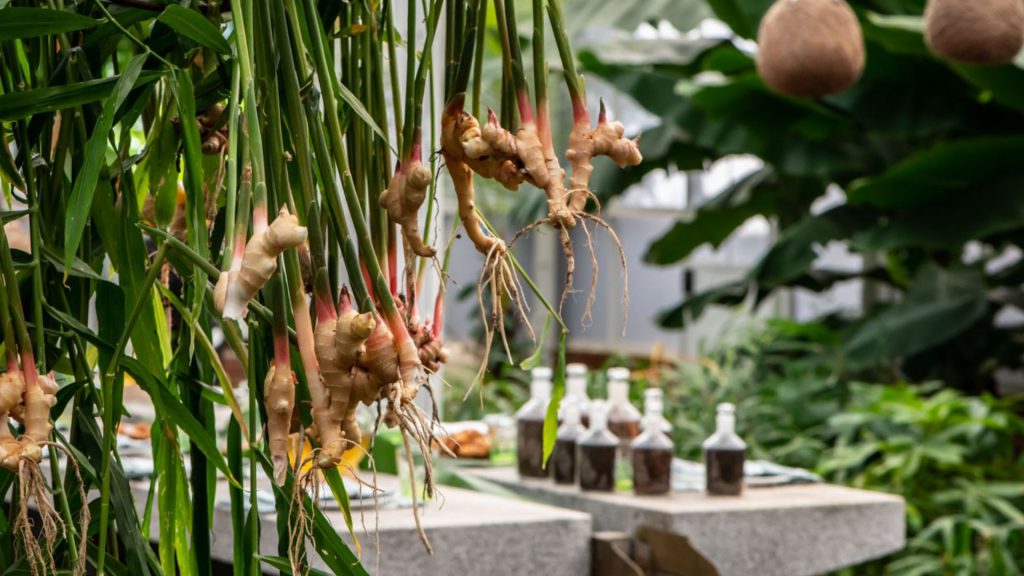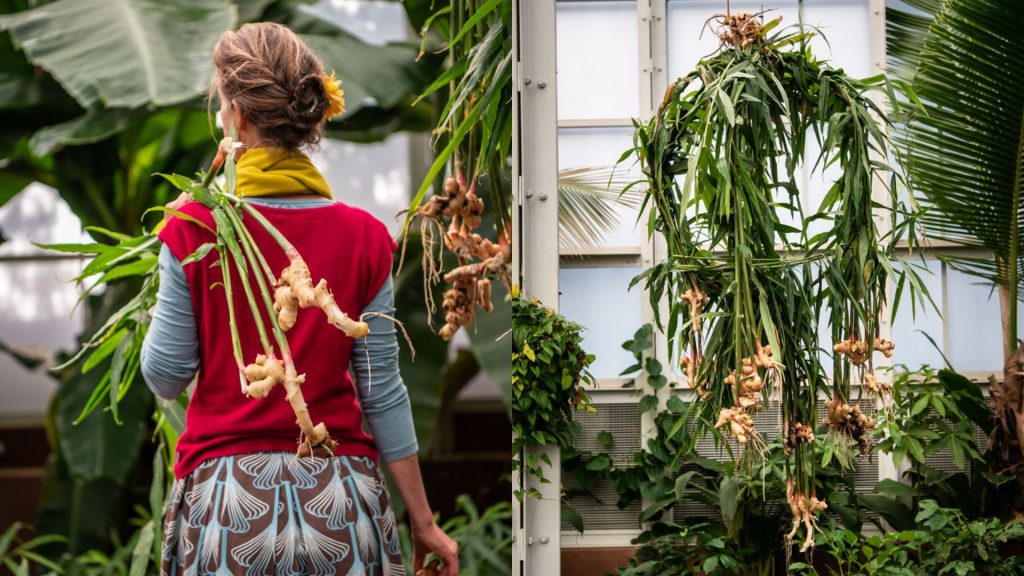
Restaurants
Spa
Day Visits
Shop
Functions
16°C
August 20th, 2021
Touted to be nature’s cure-all for everything from nausea and indigestion to being a cholesterol-reducing aid, this golden-hued miracle root is a staple in the Spice House at Babylonstoren.

Hot and fiery on the tongue, ginger grows with clusters of flowers (sometimes white, yellow, purple or red, depending on the variety) and green leaves of up to 30 cm long. But it’s the underground part of the stem, known as the rhizome, that holds the healing and culinary properties we know and love.
While one of its cousins, turmeric, has received most of the press in foodie circles over the last couple of years, ginger has been a staple in global cooking for close to 2000 years. For millennia, this tropical spice has been used for various purposes by civilisations as diverse as the ancient Chinese, the Hawaiians and the Greeks. In Japan, for example, slices of ginger are eaten between dishes or courses to cleanse the palate. Chances are that most curries you’ve tasted in your lifetime have included ginger as a cornerstone ingredient. “In the hot climates where curry originated, heating the body will induce perspiration, which in turn cools the body down,” Babylonstoren master gardener Gundula Deutschländer explains.

Another rhizome cousin, galangal, grows alongside ginger in Babylonstoren’s Spice House. It is a little bit taller and more slender than the ginger plant, producing a spray of small, white flowers. Its root is not quite as hot as ginger and is often paired with fish.
Ginger is, of course, also part of the huge Zingiberaceae plant family, which includes many varieties often grown as ornamental garden specimens. Some of these have escaped and naturalised along some of South Africa’s watercourses, says Gundula. “Many ginger plants have extravagant blooms and some emit a delectable perfume that is particularly strong at night.”

Apart from its culinary and ornamental powers, the use of ginger is inextricably linked to its medicinal purposes. “When ingested it is like switching on your body’s engine, allowing for circulation within your body,” Gundula explains. The ancient Chinese and Indians used ginger as a tonic root for many ailments. “Ginger is often added to tea blends, because it helps to open up the channels in the body. This allows for the swift absorption of the health benefits from the other herbs it has been paired with. Ginger will, for example, take the turmeric to the extremities of your fingers to ease the swelling caused by arthritis.”
It is the natural oils in ginger that give it its unique fragrance and flavour. The most important of these is gingerol, which is responsible for much of the root’s medicinal properties, including its powerful anti-inflammatory and antioxidant effects. Research has also suggested that ginger may be useful in treating nausea, aiding with indigestion and weight loss, effective at reducing the symptoms of osteoarthritis, lowering blood sugar levels, reducing menstrual pain and helping to fight infections. It may even protect against age-related damage to the brain.
Incorporating ginger into your diet seems like a no-brainer, and can be done in many ways.